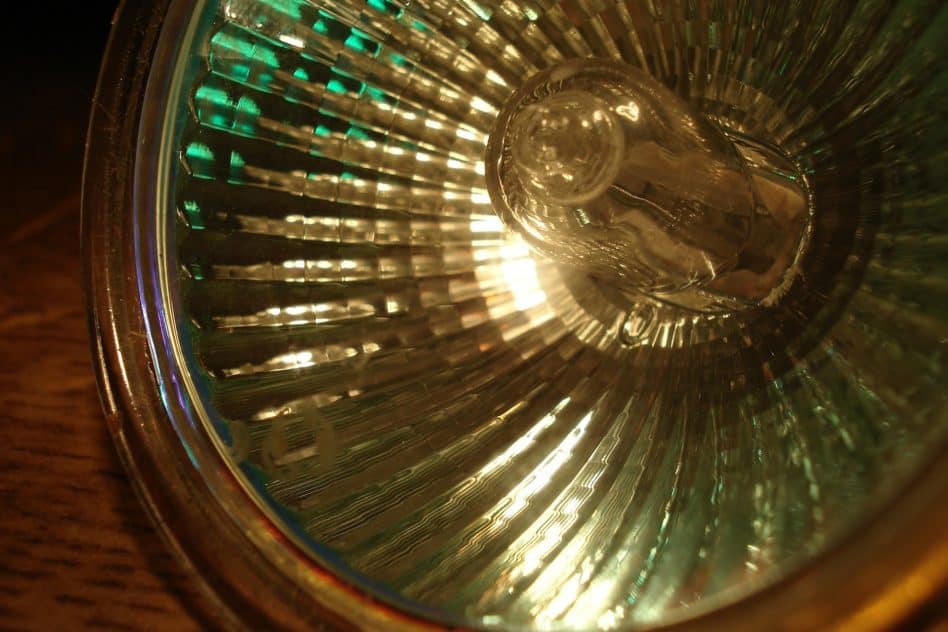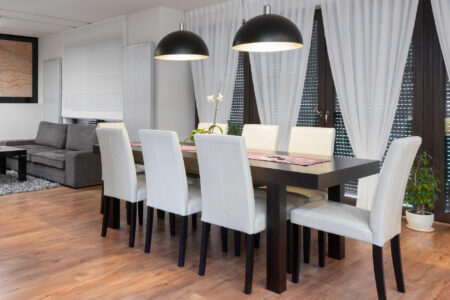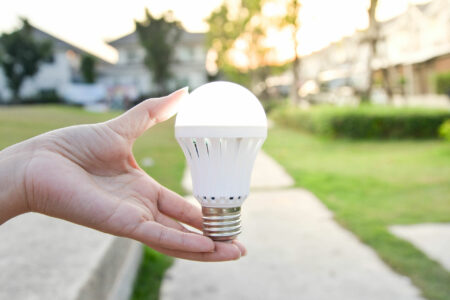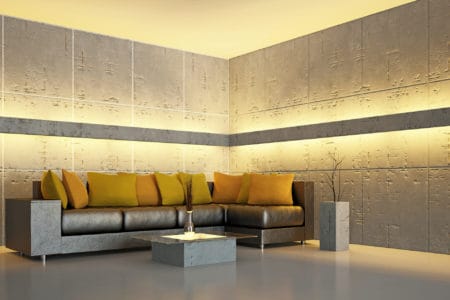Many homes still use halogen bulbs. However, halogen bulbs consume a lot of energy, giving you a high electricity bill each month. If you replace those halogen bulbs with LED lights, your energy consumption will be reduced and you will have the latest lighting technology with many benefits. In this guide we will show you the important factors when replacing your halogen bulbs with LEDs.
How do LED lights differ from halogen bulbs?
In most households and commercial establishments, both LED and halogen lights are the two most used lamps. But they are very different from each other. What sets them apart are their technology, their usage, and how long each one lasts.
LED is a semi-conductor bulb that gives off light when electricity is passed through it. Halogen, on the other hand, is a kind of incandescent lamp with filament surrounded by halogen gas. When the filament is heated, it glows and gives off light.
Energy Efficiency
LEDs are far more energy-efficient than halogen lights. Even if halogens come in low voltage (12V or 24 V), it does not mean that their energy use is low. Halogen bulbs consume a much higher amount of energy compared to LEDs.
Estimated Lifespan
The lifespan of LEDs is much longer than halogen bulbs. Most LEDs have a lifespan of around 50,000 hours or about more than ten years. A halogen lamp, however, is known to last for only about a year.
Emission Types
When electrical current is passed through LEDs, it glows immediately. They illuminate light instantly. Halogen bulbs, on the other hand, turn on gradually.
What are the Benefits of Replacing Halogen Bulbs with LED?
Save money in the long run
Although halogen bulbs are very popular in many homes, they are not energy efficient and you could be losing a lot of money over time. Typically, halogen light only uses 10 percent of the electricity for light production while 90 percent is transformed to heat and wasted. Furthermore, some halogen bulbs use transformers to convert a 110V mains voltage to 12 volts. This transformer also used some energy.
On the other hand, although the LED is much more expensive, it uses less electricity than the most halogen bulbs. This will help you save money on your electric bills. With lower electric bills, you will have more money for other important household expenses.
LED produces high-quality light without producing heat
This means that it does not only save you money, but you will also have a cooler home. Your air conditioning does not have to work as hard. Your lamps do not overheat. Halogen produces heat that can become very uncomfortable. LED lights are very cool to the touch, and they shine brighter than halogen bulbs.
LED lights last longer
As we have already mentioned above, LED lights can last for more than ten years but halogen lamps only last for about a year. This means that with LED lights, you don’t have to constantly replace your lights.
Tips for replacing halogen with LED lights
Knowing the equivalent halogen output of your LED light
Halogen bulbs come with different wattages. Often 100W bulbs are used for main lights, 60W bulbs for lamps, and 25W bulbs for places where soft and gentle light is needed. Since LED light only uses 10% of the energy used by traditional bulbs, a 10W LED will give you roughly the same output as a 100W bulb. Replacement for a 60W halogen bulb will be an LED with 6W power output.
The light emitted by a 50W LED bulb is nearly the same as the power output of a 500W traditional bulb. In general a higher wattage does not necessarily mean it gives a brighter light. So a 10W LED is actually brighter than a 60W halogen bulb. So, when replacing your halogen bulbs with LEDs, determine the power output of your halogen bulb then get an LED light with the equivalent wattage of the halogen bulb you will replace.
Understanding lumens
For LEDs the brightness is not measured by wattage since wattage indicates power into the lamp and not the light output. The best way to measure brightness is lumens. A higher lumen rating means a brighter bulb.
Understanding color temperature
The color temperature indicates how cool or warm the light color appears. A low Kelvin number indicates a warm light and vice versa. A Kelvin number that is high is ideal for tropical areas. Colder lights also have a distinctive whitish-blue radiance.
Consider the beam angle of your LED
What is the right LED replacement for halogen bulbs? You also need to consider the beam angle. This quantity is expressed in degrees. It indicates the light beam’s angle of coverage. If you are buying LED replacements for your halogens, you will soon discover that there are a variety of angles of coverage for your LEDs. The beam angles of these lights range from 45 degrees to 360 degrees.
The usual single directional beam angle is 230 degrees which covers a limited area. An omnidirectional LED light has a wide beam angle that goes in all directions. You should choose the beam angles depending on their purpose. LED spotlights have beam angles that are small and ideal for accent lighting. Regular single directional LEDs are ideal for rooms and base lighting. An omnidirectional LED light is ideal for enhancing home security.
Know the type of your socket
Common types of fittings include E26, GU10, MR16, and E14. These types have their unique method of either screwing or pushing into the light fitting. If you are going to replace several bulbs in your home, you will find out that they come with different fittings. Make sure to buy bulbs that match the fittings of your light.
One way you can do that is by bringing your old bulb with you when buying a replacement. If you are replacing a spotlight, take the bulb out and also check to see if it has pegs or pins. Besides that you also need to check if it is a line voltage or low voltage bulb. Of course the replacement needs to be of the same voltage.
Change your power supply
Most traditional bulbs can be installed into a holder with a screw thread. Recent GU10 bulbs are kept in their place by pegs and pins. Since halogen bulbs use much higher energy, transformers are used to enable a higher flow of power.
But your LEDs will need less energy to work. This means that a regular transformer has too much power for your LED light. Although you can find LED lights today that can work with a regular transformer with its built-in circuitry, not all have this feature. In this case, it is important to upgrade to an LED power supply.
Install the right dimmer switch
A lot of people have complained that LED dimmer lights are unreliable because they flicker instead of becoming dim. While some LED bulbs can manage dimmers, not all LED bulbs come with this feature. If your LED light flickers when dimmed, then you need to change your switch to a leading-edge switch. Some normal dimmers do not work well with LEDs because they carry high minimum loads.
You can solve this problem by changing to a leading-edge dimmer switch because LED lights use so little energy. Dimmable LED bulbs may be more expensive. They come with a dimmable symbol on the package. If you find the right style, it will make a difference in how you see light in your room.
Benefits of halogen replacement
You might hesitate to upgrade to LED because of the expense. But consider the benefits of doing so. You may be able to save money buying less expensive halogen bulbs but all these savings will be gone to cover your electricity bill. The savings you will get on using energy-efficient LED lights will easily cover up its initial cost of installation.
If you also consider the quality of LED lights, you benefit from having lights that will stay with you for longer than you think. But make sure you go for a reputable brand with a warranty period.
Conclusion
It is not difficult to replace your halogen lights with energy-efficient LED. Today, you can find many LED replacement bulbs for halogen sold in stores and online. LED might be more costly than halogen, but its long term benefits are evident. It is more cost-effective, long-lasting, and it does not pose any health risk, unlike halogen that produces UV radiation and a lot of heat.






